Meteorological spring ends today, and despite the dreary weather (9°C, rain), the last three months have been the warmest on record:
The weather as meteorological spring 2012 draws to a close couldn't be less representative of the season as a whole. Abnormal warmth has characterized the past three months. Spring 2012 is to go down in the record books as Chicago's warmest in 142 years running a stunning 5°C above normal!
The last spring with temperatures even close to the one about the end occurred 35 years ago in 1977 when temperatures finished within a degree [Fahrenheit] of this one.
The state climatologist should weigh in tomorrow morning with the exact figures.
This evening's eclipse, through clouds:
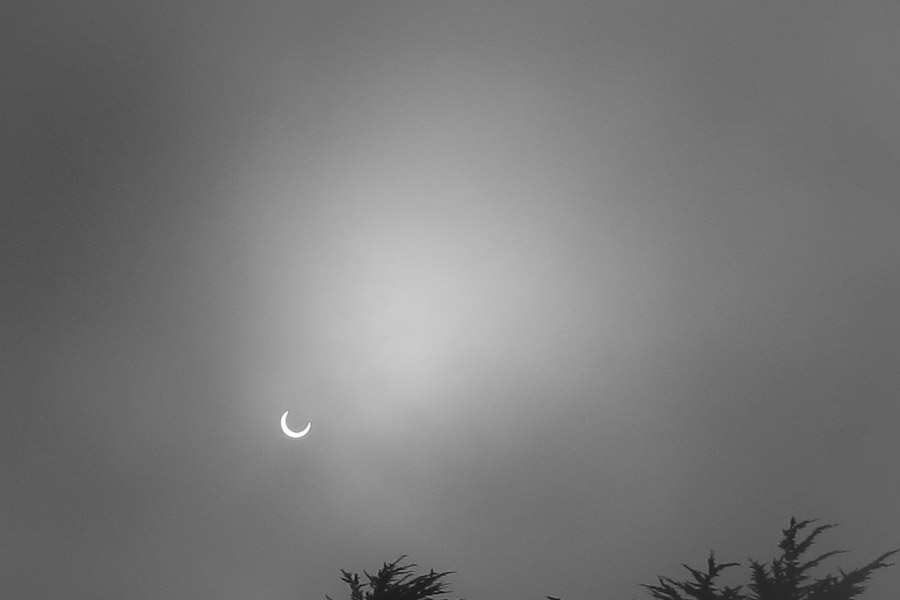
Also visible in the shadows:
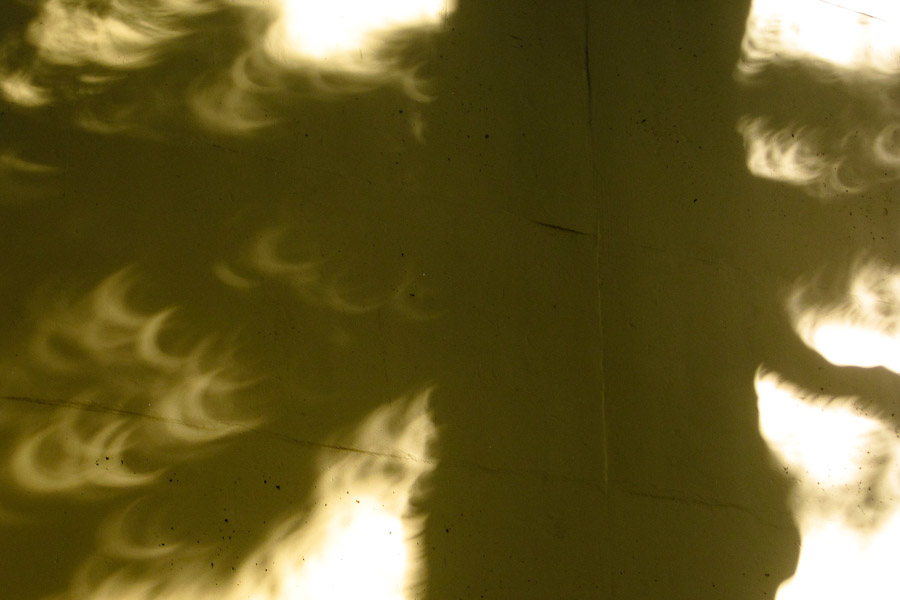
An hour later, it's a lot brighter out.
But only if you're near the Pacific:
The midwest might not have the best view but the annular solar eclipse will at least be partially visible from here. The southwest will have the best vantage point when the sun appears as a "ring of fire" when the moon passes between it and the earth on Sunday. The moon will cover about 95% of the sun's diameter during this event. The eclipse will follow a path 8500 miles long for about 3 and a half hours. The "ring of fire" spectacle will last up to 5 minutes depending on the vantage point. Six national parks in the west, including Redwoods National Park in California and Zion National Park in Utah, are enticing visitors by offering some of the best views since the eclipse track will drift right over the parks.
The eclipse starts in San Francisco at 17:16 PDT, reaches its maximum at 18:33, and ends at 19:40. Here's a map from the University of Manitoba:
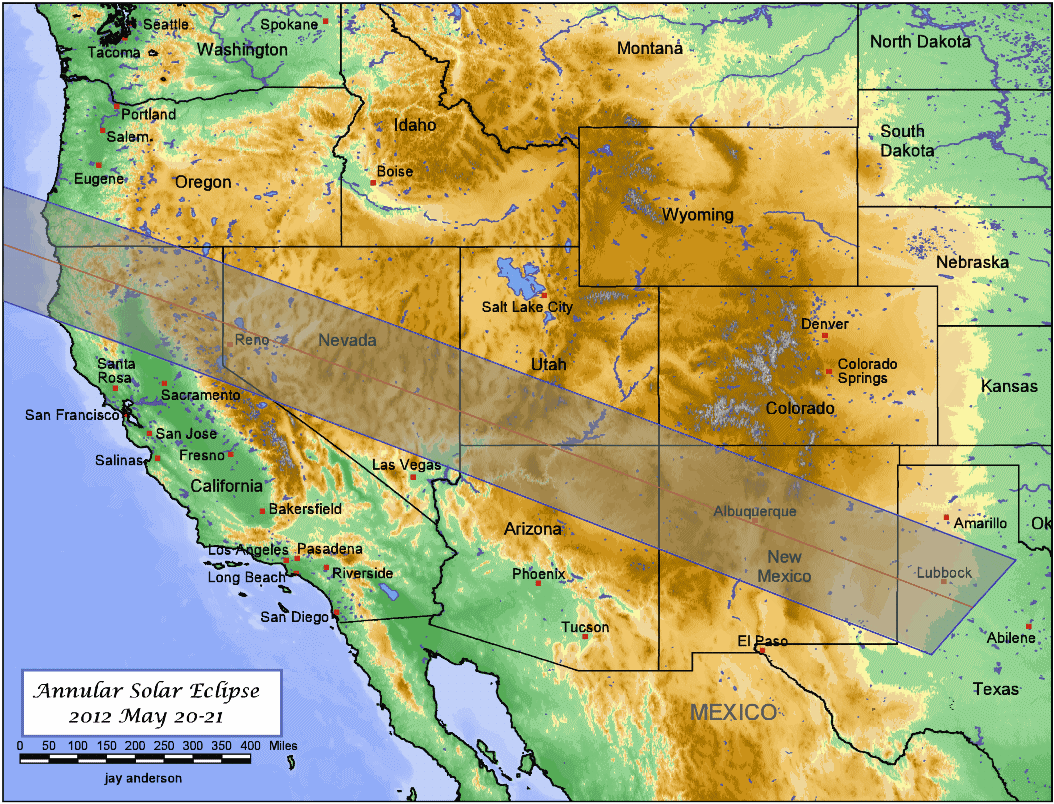
Remember, don't look at the eclipse directly. It's an annular eclipse, so it will be dangerously bright if you look straight at it.
Update: NASA has an information page about this event.
For the last day or so, Chicago has had record-low humidity of all things, with dewpoints below 0°C for much of it:
This is the third day this year and only the 19th day in 142 years dating back to 1871 that the city has officially logged a relative humidity below 20%. At Midway Airport the relative humidity also dropped to 17 percent at 5pm.
This is the lowest relative humidity recorded in Chicago in more than six years since another 17 percent humidity was logged on February 20, 2006.
The other two low humidity days this year were back on April 8 and 9 when the relative humidity dropped to 19%.
Right now the dewpoint of 2°C on a temperature of
26°C gives us a relative humidity around 21%. For comparison, though, in Las Vegas the humidity is about 3%, so we're really not that dry here.
It looks like we're not hearing the truth about anthropogenic climate change. Who's keeping the lid on the data? Climate scientists:
Climate scientists have been consistently downplaying and underestimating the risks for three main reasons. First, their models tended to ignore the myriad amplifying carbon cycle feedbacks that we now know are kicking in (such as the defrosting tundra).
Second, they never imagined that the nations of the world would completely ignored their warnings, that we would knowingly choose catastrophe. So until recently they hardly ever seriously considered or modeled the do-nothing scenario, which is a tripling (820 ppm) or quadrupling (1100 ppm) of preindustrial levels of carbon dioxide over the next hundred years or so. In the last 2 or 3 years, however, the literature in this area has exploded and the picture it paints is not pretty (see “An Illustrated Guide to the Science of Global Warming Impacts: How We Know Inaction Is the Gravest Threat Humanity Faces").
Third, as Blakemore (and others) have noted, the overwhelming majority of climate scientists are generally reticent and cautious in stating results — all the more so in this case out of the mistaken fear that an accurate diagnosis would somehow make action less likely. Yes, it’d be like a doctor telling a two-pack-a-day patient with early-stage emphysema that their cough is really not that big a deal, but would they please quit smoking anyway. We live in a world, however, where anyone who tries to explain what the science suggests is likely to happen if we keep doing nothing is attacked as an alarmist by conservatives, disinformers, and their enablers in the media.
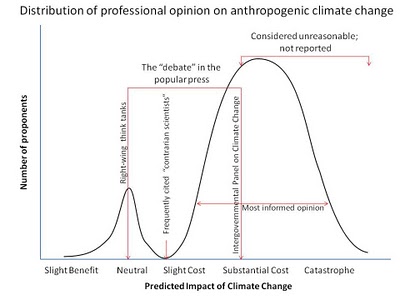
The post goes on to outline how much fun life will be in 80 years when, if we do nothing, global temperatures will be 5–7°C warmer than now. A related article goes into more depth, and includes this chart of what summers might be like:
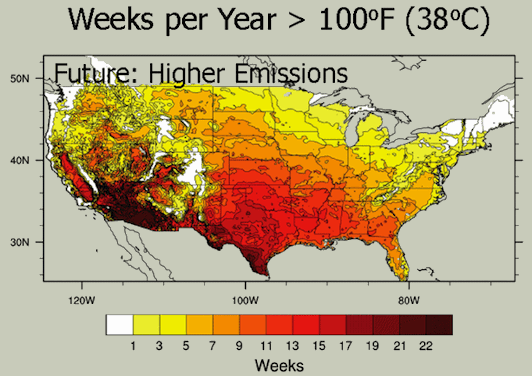
I'll wrap up by linking to yesterday's Science Friday, which discussed the appalling lack of scientific literacy in government. And the band played on...
The Tribune has a graphic this morning pointing out a number of things about our lack of snow this past winter. It turns out, the snowfall on March 4th was the earliest last snowfall. That is, in the rest of recorded history (back to 1884), we've always gotten snow later than March 4th. Until this year.
Our entire season gave us only 11 days with 25 mm or more of snow on the ground (normal is 43); it was one of only 10 seasons (out of 128) with less than 500 mm of snowfall total (normal is 932 mm); and it's the second-shortest interval from first to last snowfall ever, at 117 days (normal is 174).
Of course, snow has fallen in 40 Mays of the 128 in history...so this could all be completely wrong. We've even gotten snow in June (on 2 June 1910). But it looks for now like we can add one more quantification to our wonderfully mild winter.
At least this year, in Illinois, where the average temperature is actually below March's—and it's still above normal:
The statewide average temperature for April 1-22 is 12.3°C. The statewide average temperature for March was 12.8°C, based on the latest numbers from NOAA. That means that April was almost a degree [Fahrenheit] cooler than March. What makes this even more freaky is that the April temperatures are still 1.9°C above normal!
BTW, the statewide normal monthly temperature is 4.8°C for March and 10.9°C for April, a ten degree [Fahrenheit] rise.
State Climatologist Jim Angel concludes by pointing out that we've only had one April in recorded history that was cooler than March, back in 1907. (Recorded history goes back to 1895.)
Theories also have predictive value; that is, in order for a hypothesis to graduate to theorydom, it has to fit all the available facts and predict future events. You know, like anthropogenic climate change, which gets closer to being a true theory every day. For example, via Fallows, a paper written in 1981 seems to have predicted it pretty well:
Sometimes it helps to take a step back from the everyday pressures of research (falling ill helps). It was in this way we stumbled across Hansen et al (1981) (pdf). In 1981 the first author of this post was in his first year at university and the other just entered the KNMI after finishing his masters. Global warming was not yet an issue at the KNMI where the focus was much more on climate variability, which explains why the article of Hansen et al. was unnoticed at that time by the second author. It turns out to be a very interesting read.
[T]hey attribute global mean temperature trend 1880-1980 to CO2, volcanic and solar forcing. Most interestingly, Fig.6 (below) gives a projection for the global mean temperature up to 2100. At a time when the northern hemisphere was cooling and the global mean temperature still below the values of the early 1940s, they confidently predicted a rise in temperature due to increasing CO2 emissions. They assume that no action will be taken before the global warming signal will be significant in the late 1990s, so the different energy-use scenarios only start diverging after that.
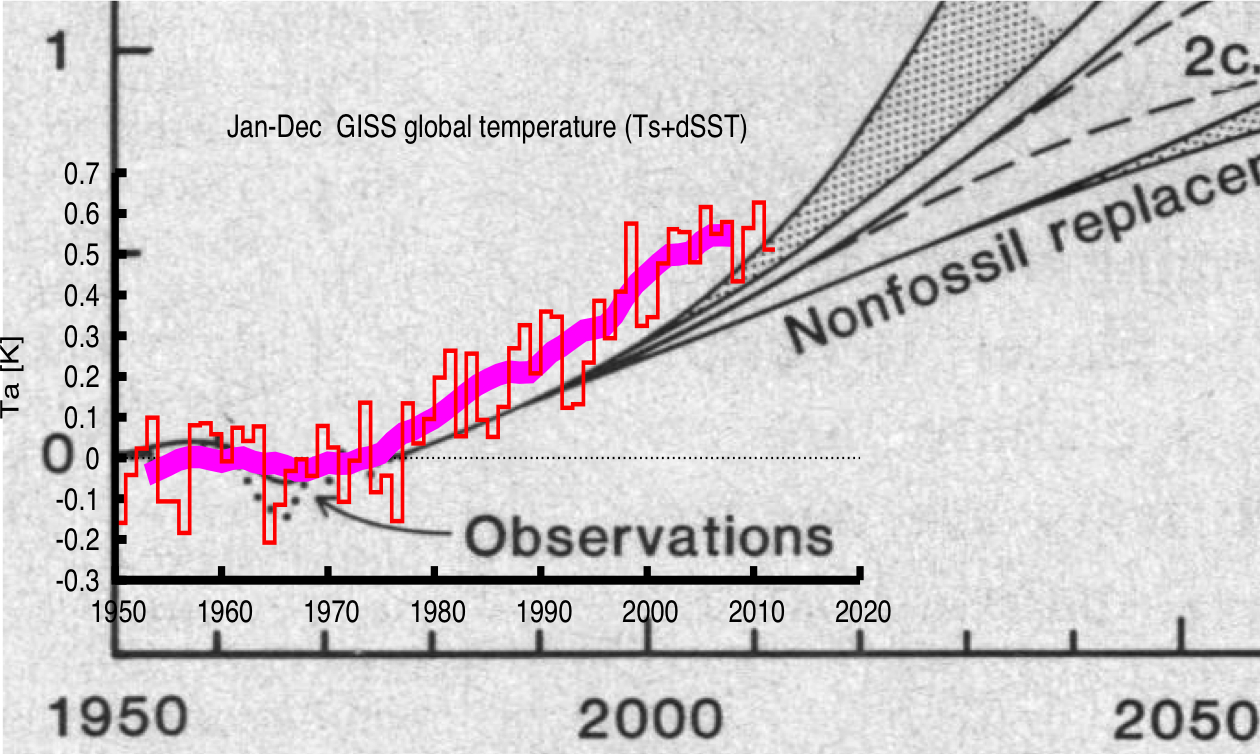
And the band played on...
Chicago's record-shattering run of above-normal temperatures ended yesterday:
The abnormal, all-too-often record warmth, couldn't continue indefinitely. For 26 consecutive days, Chicagoans were treated to temperature levels which would have been at home in June and July. They were without precedent in March and early April.
The impact of that warmth continues, even in the midst of noticeably cooler air here. And while Easter weekend temperatures are expected to rebound to the 60s, an even cooler air mass seems determined to settle southward over the eastern half of the country next week.
April's opening 5-days continue to run 3°C warmer than the same period a year ago. The results of the abnormal warmth have been tangible. Vegetation in and around Chicago has bloomed 4 to 6 weeks early, a trend which has already spawned an extremely challenging pollen-season through which many continue to suffer.
Thursday marked the first day in 27 in which temperatures finished "below normal".
Next week it's supposed to be "seasonal," which could include a freeze.
The opening days of April have seemed a lot cooler than all but one or two days in March, but as it turns out, we're still above normal:
Despite the chilly feel to the air in recent days, the books closed on a 26th consecutive above normal average daytime temperature here Wednesday. The day finished 4.4°C above normal with a high of 14.4°C.
Any clarity in the forecast for the summer, though? The Climate Prediction Center still sees only a 33% chance of above-normal temperatures through the middle of June, as the La Niña that gave us the warmest March ever winds down to a neutral state over the next couple of weeks.
If we have the warmest spring followed by a cooler-than-normal summer, there will be much rejoicing at The Daily Parker.